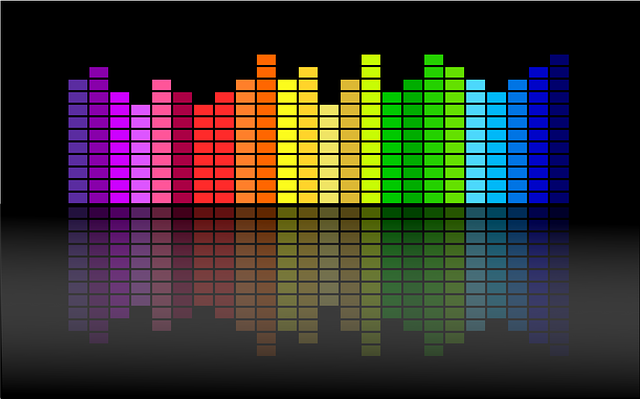Searching for the best software audio editor? This article ranks the top picks for 2024, catering to all skill levels and budgets. From free tools like Audacity to professional options like Adobe Audition, find the perfect software for your audio projects.
Table of Contents
Key Takeaways
Adobe Audition stands out for its professional-grade quality, multi-track editing, and seamless integration with other Adobe products, making it ideal for serious audio editors despite its relatively high subscription cost.
Audacity, a free and open-source audio editor, offers extensive features like non-destructive editing and a variety of audio effects, supported across multiple platforms, and continues to be an excellent choice for both beginners and advanced users.
Choosing the right audio editor depends on your specific needs, including your skill level, budget, and project requirements, with both free options like Audacity and paid options like Adobe Audition offering unique advantages.
Top Audio Editing Software of 2024

The landscape of audio editing software has seen significant advancements, making it easier than ever to find a tool that fits your specific needs. Here are some of the top audio editors that stand out in 2024.
Adobe Audition
Adobe Audition is widely recognized as a highly potent audio editor. Its wide range of features and tools make it a popular choice for professionals in the industry. Its seamless integration with other Adobe products like Premiere Pro makes it a go-to choice for professionals. Whether you are editing podcasts, music, or any other audio recordings, Audition’s features include:
Multi-track editing capabilities
User-friendly interface
Noise reduction and restoration tools
Audio effects and filters
Advanced audio mixing and mastering tools
These features offer unparalleled flexibility for all your audio editing needs, including the use of royalty free music clips.
Adobe Audition’s audio restoration tools, a key feature, are best-in-class, which can significantly enhance the quality of your audio files. These tools are crucial for cleaning up audio clips, removing background noises, and enhancing overall audio quality. Additionally, Audition supports external plugins (VST, VST3, and AU), allowing for further customization and enhancement of your audio projects.
Adobe Audition’s subscription model, priced at $20.99 per month (billed annually), might be a drawback for some users. However, the investment is justified by the comprehensive features and professional-grade quality it offers. For those who need the full suite of Adobe Creative Cloud, the $54 per month plan provides access to all Adobe apps, making it a valuable option for creative professionals.
Adobe Audition comes highly recommended for individuals serious about audio editing. Its robust features, ease of use, and integration with other Adobe products make it the best audio editor for professional use.
Audacity
Audacity, a completely free, open-source audio editor, holds favor among many due to its impressive range of features. Compatible with Windows, Mac, and Linux, Audacity supports unlimited audio tracks, making it a versatile option for various audio projects. Its multi-platform support and extensive plugin library cater to both beginners and experienced users.
The latest version of Audacity, 3.2, brings forth several new features and improvements, including:
Non-destructive editing, allowing more flexibility in adjusting audio clips without altering the original files
A variety of audio effects like reverb and distortion, enhancing its capabilities
Improved performance and stability
These updates make Audacity an even more powerful tool for podcasters and those working on detailed audio projects.
Moreover, Audacity has launched audio.com, a platform for sharing audio and connecting with new audiences. This addition makes it easier for content creators to distribute their work and reach a broader audience. For a free audio editor, Audacity offers a remarkable set of tools, making it a strong contender in the audio editing space.
Avid Pro Tools Intro
Avid Pro Tools Intro, a free version of the industry-standard Pro Tools software, is designed as an accessible entry point for novices. Despite being a free audio editor, it offers essential functionalities that cater to those just starting in audio editing.
Pro Tools Intro includes features like multi-track editing, basic audio effects, and support for various file formats, making it a versatile tool for simple audio projects. Its user-friendly interface ensures that newcomers can quickly learn the ropes without feeling overwhelmed.
For anyone looking to dip their toes into professional-grade audio editing, Avid Pro Tools Intro is an excellent starting point.
GarageBand
GarageBand, a user-friendly audio editor pre-installed on all Mac devices, provides a range of features catering to both novices and advanced users. It includes virtual instruments, multi-take recording, and seamless exporting to iTunes, making it a comprehensive tool for music production and podcast editing.
The latest updates to GarageBand have improved its functionality, including better MIDI support and the ability to drag recordings from Voice Memos. These enhancements make it a preferred choice for Mac users looking for an intuitive yet powerful audio editing software.
Whether you’re looking to record and edit music or editing podcasts, GarageBand offers a robust set of tools to bring your audio projects to life.
Choosing the Right Audio Editor for Your Needs
The selection of appropriate audio editing software hinges upon multiple factors such as:
goals
skill level
budget
project requirements
Understanding these aspects will help you make an informed decision and ensure that the software you choose aligns with your needs.
Evaluating software through free trials or demos is highly recommended. This hands-on approach allows you to assess the usability and compatibility of the software with your workflow. By considering your specific needs and testing different options, you’ll be better equipped to choose the perfect audio editor.
Assessing Your Skill Level
The selection of the right audio editor is heavily influenced by your skill level, especially when you need to edit audio files. Beginners should look for software with an intuitive interface and easy-to-use tools to avoid frustration and focus on learning the basics. Tutorials and guides can be extremely helpful in this regard, providing step-by-step instructions to get you started.
For advanced users, robust editing features and real-time effects are essential. Software that offers customization and flexibility will allow experienced editors to refine their projects to professional standards. Assessing your comfort level with the software’s user interface is also important, as it can significantly impact your productivity and creativity.
Determining Your Budget
When determining your budget for audio editing software, striking a balance between cost and features is of essence. Free options like Audacity provide extensive capabilities without any cost, making them ideal for budget-conscious users. However, these options might come with limitations that could affect more complex projects.
Investing in paid software can offer more advanced features and better support. For example, Adobe Audition provides comprehensive tools and professional-grade quality, justifying its subscription cost for frequent and professional use. Evaluate your budget and prioritize the features you need to find the best balance between cost and functionality.
Project Requirements
Different projects come with unique requirements, so it’s essential to choose software that supports your specific needs. For instance, music production might require multi-track recording and virtual instruments, while podcast editing might focus more on ease of use and audio restoration tools.
Ensure the software you choose can handle the necessary tracks, formats, and plugins for your project. Identifying specific editing needs like mixing, mastering, or adding effects will help you select the most suitable software. By aligning your project requirements with the capabilities of the audio editor, you can achieve your goals more efficiently.
Key Features to Look for in Audio Editing Software
Certain key features, when considered while choosing audio editing software, can significantly influence your workflow and project quality. Some important aspects to consider are:
Compatibility
Multi-track editing
Audio restoration tools
Plugin support
Compatibility with your operating system and file formats is crucial for a smooth experience. Ensure that the software you choose can handle the formats you frequently use and can export high-quality audio files. A user-friendly interface and real-time effects processing can also enhance your editing efficiency.
Multi-Track Editing
Multi-track editing enables you to edit audio through a multi track audio editor, which offers:
Simultaneous layering and manipulation of multiple audio tracks
Essential for complex audio projects like music production and podcasting
Provides flexibility in creating detailed soundscapes
Ensures precise synchronization of audio elements
While free audio editors may offer limited multi-track capabilities, investing in paid software often provides advanced tools for multi-track editing. This investment can be particularly beneficial for professionals who require extensive control over their audio projects.
Audio Restoration Tools
Audio restoration tools, vital for cleaning up recordings, work by minimizing noise, clicks, and other imperfections. These tools can transform old or poor-quality recordings into clear and professional-sounding audio. Software like Descript’s Studio Sound and Acon Digital Acoustica offer advanced machine learning tools for removing distracting sounds.
Consider additional features like noise reduction and audio enhancement tools to meet specific project requirements. These tools can significantly improve the overall audio quality, making your recordings more polished and professional.
Plugin Support
Plugin support extends the functionality of your audio editing software by incorporating third-party effects and tools. This feature is essential for advanced audio processing and customization, providing specialized effects and additional capabilities.
Software like GarageBand and Audacity support third-party plugins, enhancing their native capabilities and offering more flexibility in your editing environment. By integrating specific plugins tailored to your needs, you can create a more personalized and powerful audio editing experience.
Free vs. Paid Audio Editors
The contention between free and paid audio editors typically revolves around ease of use, functionality, and quality. Free options like Audacity and Ocenaudio are accessible for beginners, offering essential features without any cost. These tools can be a great starting point for those on a tight budget.
However, free audio editors may come with limitations in features and support compared to paid versions. Paid software like Adobe Audition provides comprehensive tools and professional-grade quality, justifying the investment for frequent and professional use. Consider the ease of use, functionality, and quality when comparing different audio editing software options.
Best Free Options
Looking for the best free audio editor? Some options include:
Audacity: a versatile, open-source audio editor with extensive features suitable for both beginners and professionals
Ocenaudio: known for its clean interface and real-time editing capabilities
WavePad: supports a wide range of formats but is limited to one-track recording.
These free options provide good functionality for those on a tight budget, making them ideal for simple audio projects. While they may lack some advanced features found in paid software, they offer a solid foundation for basic audio editing needs:
Audacity
GarageBand (for Mac users)
WavePad
Ocenaudio
Cakewalk by BandLab (formerly SONAR)
Value of Paid Software
Adobe Audition, a paid audio editing software, provides a comprehensive suite of tools capable of significantly enhancing your project’s quality and efficiency. For frequent and professional use, the investment in paid software is often justified by the advanced features and superior support provided. Adobe Audition, for instance, is a top-end sound production toolkit ideal for a variety of users, including:
professionals
musicians
podcasters
audio engineers
Industry-standard software like Avid Pro Tools also comes with a higher price tag but offers unparalleled features for professional audio production. These tools provide a slicker user interface and more powerful editing capabilities, which can make a notable difference in your audio editing workflow. If you’re serious about audio editing, investing in paid software can provide the tools you need to achieve professional-grade results.
Specialized Audio Editors for Different Users

Users’ needs when it comes to audio editing software can vary significantly. Whether you’re a podcaster, musician, or professional sound engineer, selecting software tailored to your specific requirements can significantly enhance your workflow and the quality of your output.
Here are a few recommendations tailored to different user types.
For Podcasters
Podcasters often need audio editors that offer ease of use and podcast-specific features. Audacity is a popular choice among podcasters due to its simplicity and range of features, including streaming capabilities directly to podcast listeners. Ocenaudio also provides a clean interface and real-time editing capabilities, making it an excellent choice for podcasters.
Hindenburg Journalist offers more advanced tools and effects, similar to Adobe Audition, tailored for post-production of podcasts. For those conducting remote interviews, platforms like SquadCast and Riverside provide web-based solutions for recording and editing, although they may not offer the full range of audio editing tools.
For Musicians
Musicians require robust music production tools in their audio editors. FL Studio 21 is praised for its user-friendly design and customizable interface, making it suitable for both beginners and experienced users. Ableton Live Lite, a free DAW, is known for its intuitive controls and streamlined workflows, ideal for electronic music producers.
Apple Logic Pro offers a massive number of music production tools and synchronization with Ableton Link, making it a top choice for musicians. Ableton Live itself is celebrated for its musical flexibility and innovative presentation, appealing to musicians who want to experiment with their sound.
For Professionals
Professional sound engineers and producers need advanced features and reliable performance. Avid Pro Tools is widely regarded as the industry standard for professional sound production, offering a comprehensive suite of tools for high-quality audio editing. Steinberg Cubase Pro 12 is renowned for its MIDI editing capabilities and extensive VST plugin support, making it a top choice for professionals.
Apple Logic Pro is favored by industry professionals for its spatial audio and Dolby Atmos tools, alongside a vast library of musical instruments and effects. Ableton Live’s advanced time-following capabilities and video scoring tools also make it suitable for professional sound engineers.
How to Use Common Audio Editing Tools
Mastering common audio editing tools can considerably bolster your editing capabilities. Basic operations like trimming audio clips, applying fade in/out effects, and using advanced techniques like noise reduction, pitch shifting, and spectral editing are essential skills for any audio editor. Here are some tips on how to use these tools effectively.
Noise Reduction
Crucial for cleaning up recordings, noise reduction tools work by minimizing unwanted noises. To effectively use noise reduction, you first need to capture a noise profile, which is a sample of the noise you want to remove from the recording. Once the noise profile is identified, the software applies a filter to reduce these unwanted sounds, helping to clean up your audio clips.
It’s important to note that the quality of noise reduction can vary based on the accuracy of the noise profile. An inaccurate profile can result in artificial or distorted sound, so take the time to capture a clear sample of the unwanted noise.
Pitch Shifting
Using sophisticated algorithms, pitch shifting enables you to modify your audio’s pitch without affecting the speed. This technique is particularly useful for music production and creative sound design. Some software offers a sliding stretch option, enabling gradual pitch changes over a selection, which can be used for unique and creative audio effects.
To achieve the best results, experiment with different pitch shifting settings and listen carefully to ensure the changes sound natural and enhance your audio project. This tool can be a powerful addition to your audio editing arsenal, allowing for greater flexibility and creativity.
Spectral Editing
Spectral editing renders audio as a frequency spectrum, allowing precise removal or alteration of specific unwanted sounds. This technique is especially useful for removing transient noises like clicks, pops, and coughs from recordings. By manipulating specific frequency ranges within a selected time frame, you can achieve a cleaner and more polished sound.
Paid audio editors often provide more intuitive spectral views, making it easier to identify and edit specific frequencies. This advanced tool is invaluable for detailed audio analysis and precise editing, helping you produce professional-quality audio projects.
Integrating Audio Editors with Other Software
Integration of your audio editor with other software can optimize your workflow and elevate your projects. Ensuring compatibility with digital audio workstations (DAWs) and video editing software is crucial for a seamless editing experience.
Here’s how you can make the most of these integrations.
Digital Audio Workstations (DAWs)
By enabling musicians to record, edit, and mix tracks with unmatched flexibility, digital audio workstations (DAWs) have revolutionized music production. One significant advantage of using a digital audio workstation is its ability to support virtual instruments and effects plugins, which can emulate real-world instruments and studio equipment.
This capability enables seamless collaboration by allowing artists to share project files and work together, regardless of geographical location.
Video Editing Software
The post-production process is enhanced by integrating audio editors with video editing software, offering precise control over audio synchronization and quality. Using audio editors alongside video editing software allows for intricate sound design, ensuring that audio elements complement the visual components effectively.
Adobe Audition, for instance, supports render-less video sharing with Adobe Premiere Pro, streamlining the video-sound editing process.
Check out The Best Video Editing Software and best pick.
Summary
Choosing the right audio editing software can transform your audio projects, whether you are a beginner, a musician, or a professional sound engineer. The software discussed in this guide, including Adobe Audition, Audacity, Avid Pro Tools Intro, and GarageBand, each offer unique features that cater to different needs and budgets. By assessing your skill level, budget, and project requirements, and understanding key features like multi-track editing, audio restoration tools, and plugin support, you can make an informed decision.
As you explore the world of audio editing, remember that the right tools can elevate your work to new heights. Embrace the technology, experiment with different features, and let your creativity shine through your audio projects.
Frequently Asked Questions
What is the best audio editing software for beginners?
For beginners, Audacity is the best audio editing software as it has a user-friendly interface, extensive features, and is free to use.
Is Adobe Audition worth the subscription cost?
Yes, Adobe Audition’s comprehensive features, professional-grade quality, and seamless integration with other Adobe products make it a worthwhile investment for frequent users.
Can I use free audio editing software for professional projects?
For professional projects, it’s best to use paid audio editing software like Adobe Audition or Avid Pro Tools for more advanced tools and better support.
What audio editor is best for podcasting?
For podcasting, both Audacity and Hindenburg Journalist are excellent choices due to their user-friendly interface and podcast-specific features. Choose the one that best fits your needs.
How important is multi-track editing in audio software?
Multi-track editing is crucial for handling complex projects and creating detailed soundscapes by layering and manipulating multiple audio tracks simultaneously.









